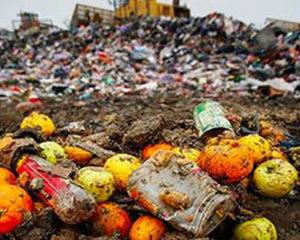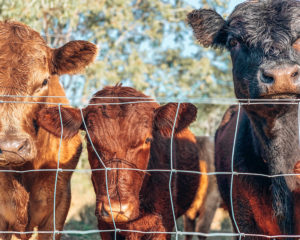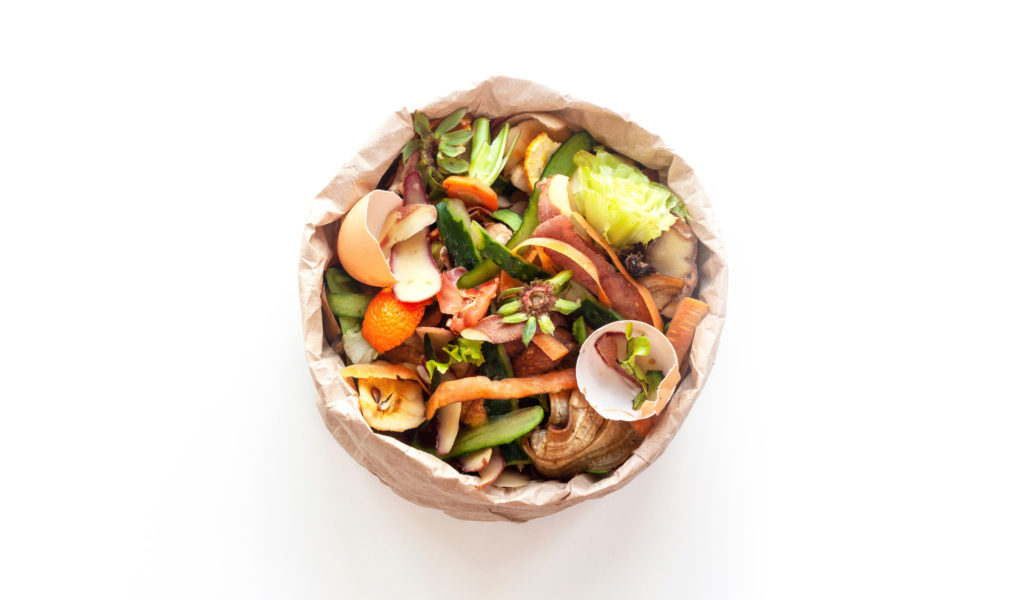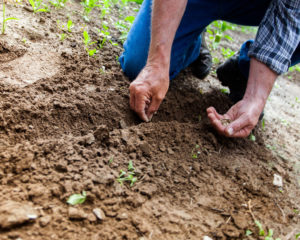The food that we eat has an enormous impact on our collective carbon footprint, with estimates suggesting that a quarter of all global greenhouse emissions are linked to our existing consumption habits. Across the US, food contributes up to 30% of household emissions, and in New York, it has been identified as one of the four key sources of the city’s enormous carbon footprint.
The carbon footprint associated with food comes from a variety of sources, including industrial farming methods, the transportation of food, the lifecycle of food products, and even the produce itself in cases such as the rearing of livestock—however, this doesn’t need to be the case.
Traditional farming methods, such as those used by indigenous communities and organic farmers, can actively sequester carbon and have a positive impact on global emissions. Additionally, within modern systems of food production there are plenty of ways in which our food choices can minimize our individual carbon footprints and mitigate climate change.
Together, these approaches to the way we consume food can help us to lessen its global impact. Here then, we explore some of the total emissions of our favorite foods, and what we can do to reduce those in order to slow global warming.
Which Foods Have the Largest Carbon Footprint?
Some foods have significantly larger carbon footprints than others. This is often determined by the way in which land is used to cultivate these foods, and the greenhouse gas emissions produced in the process of growing and preparing that food. Amongst these high-emitter-foods are:
Animal products
This is especially true of products relating to the rearing of cattle, such as beef, cheese and dairy. Cattle require a huge amount of land to rear effectively, and are therefore a catalyst for deforestation. Unfelled trees are an active source of carbon exchange, and the soil in which they live actively sequesters carbon. In the process of eliminating these resources, carbon is released into the atmosphere, whilst removing a valuable carbon sink. Cows also produce a huge amount of methane, which is a very powerful greenhouse gas in the short term. This problem is exacerbated by the ever-increasing demand for beef and other red meat, which has been spearheaded by the production of burgers by fast-food restaurants.
Cash crops
Cash crops such as coffee, chocolate, and palm oil are also massive contributors to and catalysts for deforestation. Whilst they can be grown sustainably, global demand is encouraging their production on an unsustainable scale. Between 1970 and 2018, the production of palm oil rocketed from 2 million tonnes to 71 million tonnes per year.
Farmed shrimp
Farmed (rather than wild) shrimp also has a huge environmental impact depending on from where it is sourced. Large swathes of mangroves have been cut down in South America and Asia to provide suitable environments for shrimp farming, and it has been estimated that 100g of shrimps from these sites produce a carbon dioxide equivalent of 198kg directly attributed to land use change alone.
Which Foods Have the Smallest Carbon Footprint?
Contrarily, there are other foods which have a significantly lower carbon footprint. By increasing our consumption of these relative to other foods, we can begin to use our diet to fight climate change. These include:
Bananas
With sufficient sunlight, bananas can be grown incredibly easily with little land development necessary, effectively converting direct sunlight into durable, delicious, and nutritious food. Due to their durability, and their ability to ripen slowly, they can also be transported by sea, which is usually more efficient than transport by air.
Brassicas
The brassica family includes broccoli, cabbages, and kale. They grow easily in challenging conditions, meaning that they have a low carbon footprint, and since only part of the plant can be consumed, they are ideal for producing biomass for organic farming. The means they have become central to many sustainability practices within the farming industry.
Potatoes
This hardy staple can be grown across the world and requires very little processing or preparation. Compared to beef, which creates a whopping 59.75kg CO2e per kilo of food, potatoes create only 0.37kg.
What are the Factors Contributing to Food Emissions?
Livestock and fisheries are the source of 31% of food emissions, as they produce vast quantities of methane, and often require the development and maintenance of extensive infrastructure in order to handle the animals and their environments.
 Crop production produces 27% of food emissions, particularly due to the release of NO2 (nitrous oxide) from fertilizer and manure, as well as the CO2 emissions produced by agricultural machinery.
Crop production produces 27% of food emissions, particularly due to the release of NO2 (nitrous oxide) from fertilizer and manure, as well as the CO2 emissions produced by agricultural machinery.
The food supply chain produces 18% of emissions, and is composed of a wide range of sources, such as transportation, retail, and the processing of raw food into finished food products.
The final 25% of food emissions are produced by food waste. When food is wasted, it not only represents lost emissions earlier in the process, but also contributes to new emissions. The EPA has identified food as the main item disposed of in US landfills, producing vast quantities of methane when it breaks down anaerobically in these environments. This makes food waste responsible for the annual production of 3.3 billion tons of CO2e, making it essential to adopt more sustainable food disposal systems.
How Can You Reduce the Carbon Footprint from Food?
Eat less meat
 Meat is a resource-intensive food source, requiring a great deal of land and the production of other food in order to provide the finished meat product. As explained above, livestock produces a great deal of methane, and catalyzes deforestation, which simultaneously produces emissions whilst destroying a valuable carbon sink. By replacing your meat with high-protein plant-based alternatives, such as beans, tofu or quorn, you can reduce your personal carbon footprint whilst working to reduce global demand for meat and reducing the impact of food on our climate.
Meat is a resource-intensive food source, requiring a great deal of land and the production of other food in order to provide the finished meat product. As explained above, livestock produces a great deal of methane, and catalyzes deforestation, which simultaneously produces emissions whilst destroying a valuable carbon sink. By replacing your meat with high-protein plant-based alternatives, such as beans, tofu or quorn, you can reduce your personal carbon footprint whilst working to reduce global demand for meat and reducing the impact of food on our climate.
This doesn’t mean that you need to omit meat and animal products from your diet entirely. In fact, livestock animals which are raised healthy in a biodiverse food system can act as a valuable means of cycling nutrients and can provide excellent nutrient-dense foods. However, it’s important to develop a more conscientious relationship with meat, so saving meat for special occasions, and only buying organic meat can drastically reduce your contribution to carbon emissions.
Choose organic food produce
Organic food can come from a range of sources and is produced by a wide range of farming practices. However, by buying organic you can generally be sure that your food has been produced with fewer or none of the chemicals often utilized for fertilization, protection from pests, and preservation. It goes without saying that reducing your consumption of chemicals is better for your body, but it also means that you are no longer supporting the industrial production and use of chemicals, which are highly carbon-intensive products.

Shop locally
Reducing the distance which your food travels is a good way to reduce your emissions, but there are also a range of other benefits when buying locally. If you can buy directly small-scale farmers or food-producing neighbors, it is likely that their food is not also integrated into large-scale food-supply chains. This means that their food is less likely to have been produced using industrial machinery and processes. In any case, transparency surrounding the production of your food is likely to be greater, allowing you to make better-informed food choices. Buying from local producers is also an excellent way to keep money circulating in your local economy.
Cook more meals at home
By cooking at home, you can take greater responsibility for the ingredients that make up the food that you eat, allowing you to make more conscientious and informed decisions about your food carbon footprint. With good planning, you can also mitigate food waste by saving and using leftovers or cooking several meals’ worth of food at a single time, thus reducing the carbon emissions produced by cooking. If you have a garden, you can reduce this impact even further by cooking with home-grown ingredients and converting food waste into carbon-absorbing compost and soil, rather than sending it to rot in landfill.
Taking turns to cook and share within your community can also have knock-on environmental benefits, as food can be an excellent catalyst for social action and education focusing on our relationship with nature.
However, this doesn’t mean that you need to forgo restaurants entirely. Restaurants can be a great source of local employment, especially for those with other time commitments such as single-parents and students. It can also be a wonderful treat to go out and enjoy someone else’s cooking. However, if you do decide to eat out, it’s sensible to be more conscientious in the restaurants which you choose to visit—the environmental cost of eating with a family-owned, organic restaurant which uses local and seasonal ingredients is significantly lower than buying a burger from an international fast-food chain.
Start a garden
Growing your own food is an excellent way of mitigating many of the emissions associated with global food production. Depending on your climate and your access to seeds, you may be able to grow and consume food entirely without the use of fossil fuels. The process of growing plants, especially those which produce food, helps to absorb and convert carbon dioxide, sequestering it and transforming it into oxygen. A garden is an excellent way of transforming food waste into fertilizer by developing a composting system, and finally, it can help you to supplement your diet with foods which are rarely present within more carbon-intensive supply chains.
Reduce, reuse and recycle
The principle of reduce, reuse and recycle can also help us to think about ways of making our carbon footprints smaller.
You can reduce your immediate food waste by being more conscientious about how you buy your food. Reducing the amount you purchase and only buying what you need can help to mitigate waste emissions from landfill, and if we do so collectively, we can cumulatively reduce our demand for food and carbon intensive food systems. We can also reduce the amount of packaging we produce and dispose of by buying bulk from local sources, and buying produce with the minimum necessary packaging.
We can reuse much of our food, saving leftovers for other meals, or using food scraps as ingredients. Even things as simple as the flesh around pumpkin seeds can be used to thicken and flavor stews and casseroles.
We can also replace many of the disposable items we use to work with food with reusable alternatives. Replacing plastic bags with cloth shopping bags, saran wrap with beeswax cloths, and single-use containers with glass or metal food containers which can be brought to take-away restaurants are all great ways of reducing our food carbon footprint.
We can also work to recycle much of the packaging in which our food comes, as well as the food itself. If we make sure that the food we buy comes in packaging which can be easily recycled in our area, we can go a long way towards reducing the amount of waste sent to landfill, and subsequently the carbon footprint of our food.
It’s always sensible to make changes close to home, so starting to reduce your carbon footprint by changing your food habits is a great place to start. However, there are many ways in which you can spread that change throughout your life and business.
A great way to start is by measuring your own carbon footprint. Using the EPA’s Carbon Footprint Calculator you can get a far more detailed insight into how and where you are producing emissions. You can also learn more about your relationship with waste, and how to make your waste more environmentally friendly in the RTS blog.


